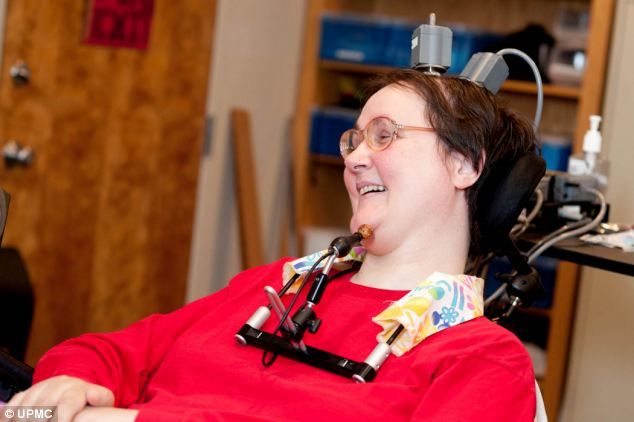A paralyzed woman controls an artificial hand with the help of thought
Last reviewed: 28.11.2021

All iLive content is medically reviewed or fact checked to ensure as much factual accuracy as possible.
We have strict sourcing guidelines and only link to reputable media sites, academic research institutions and, whenever possible, medically peer reviewed studies. Note that the numbers in parentheses ([1], [2], etc.) are clickable links to these studies.
If you feel that any of our content is inaccurate, out-of-date, or otherwise questionable, please select it and press Ctrl + Enter.
52-year-old American Jan Schuermann, who has paralyzed the entire body, has learned to control a mechanical hand with the help of thought power. A complex mechanical device is controlled by impulses that come from the human brain.

Thirteen years ago, Jane lost her ability to move because of a spinal cord injury, her nervous system was broken, and this led to the consequences that the patient has in the fracture of the cervical vertebrae.
Scientists from the University of Pittsburgh have done an incredible thing - they implanted electrodes into the brain with the help of which a woman could control an artificial hand.
A computer program developed by specialists can fix pulses emanating from the cerebral cortex and thus a person is able to control an artificial hand.
The woman underwent an operation to implant a network of electrodes into the brain, which are located on each side in the neighborhood of the neurons responsible for limb management. After that, the electrodes were attached to the robot manipulator and the computer program.
Experts call this achievement a significant advance in the field of prosthetics, when a person can learn to control limbs with the help of thought alone.
The patient took two days to learn how to move his hand in different directions, and after a week she was able to take objects of different shapes. Jan focused not on how to move her hand, namely on a specific goal, for example, to take from the table the desired object.
Andrew Schwartz, a professor of neurobiology at the University of Pittsburgh, says that all scientists who participated in the program were amazed at the speed with which Jen managed to master the management of a complex mechanism.
At the beginning of the experiment, the robotic manipulator was programmed in such a way as to help the patient's movements and exclude possible small errors. But after a short time, Jane began to deal with the artificial hand herself, without the help of the program.
At the end of three months, the paralyzed woman already knew how to perform 91% of tasks with the help of a mechanical limb and at the same time learned to do it for thirty seconds faster.
These are phenomenal results, which are a real breakthrough in biomedicine. Thanks to the development of scientists, paralyzed people will be able to control the mechanical limbs with the help of natural brain activity, which will allow them to perform simple manipulations and actions, elementary for a healthy person, but not accessible to the paralyzed.
Scientists are going to improve the development. Despite its uniqueness and the success of the experiment, there are a number of shortcomings and problems. In particular, scars interfere with the transfer of data to the computer. They are formed in the field of implantation of sensors. At the moment, experts are considering the possibility of wireless transmission of impulses, but so far it is too early to talk about this.
At the moment, the mechanical arm is not capable of more complex actions, for example, writing something or tying shoelaces, but progress does not stand still, therefore it is quite possible that scientists will improve the possibilities of an artificial limb.

 [
[